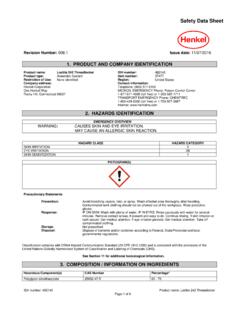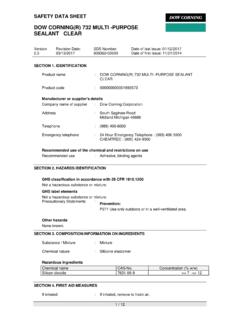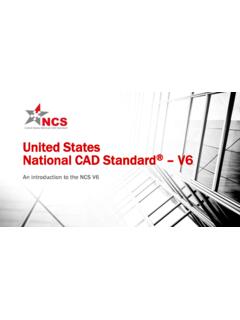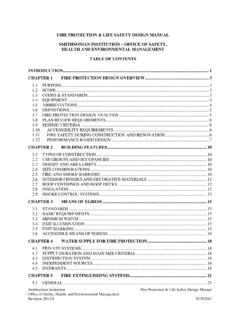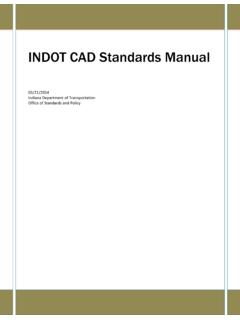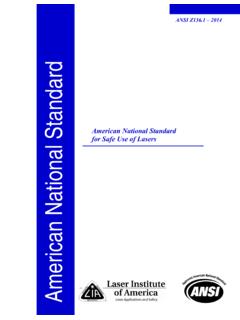Transcription of AES Design Drafting Standards
1 APS/AES Design AND Drafting Standards Revised 10/8/13 ii iii FOREWORD This APS/AES Design and Drafting Standards manual has been compiled in order for the Advanced Photon Source s Design and Drafting Group to better communicate Design requirements to our customers and vendors. When components are built for the Advanced Photon Source, close adherence to the Standards established in this manual are essential. Following these Standards means that the components will meet our requirements, and more importantly, that the components supplied by the vendors will meet the Advanced Photon Source s quality Standards for the useful life of the facility.
2 Although this manual presents a consolidation of available information, it is impractical to include all data pertinent to the fabrication of components; therefore, sound reasoning and good judgment must be exercised in making interpretations from this manual. In addition to this manual the Design and Drafting Group adheres to the industry standard for dimensioning and tolerancing, ASME This Standard is to be applied as a graded approach as outlined in Table 1 in each of the Group-specific Engineering Document Management Plans.
3 Table 1, reproduced below, outlines the graded approach for revision tracking of controlled documents in different repositories; as the safety requirements and cost increase so should control level or rigor increase as outlined in Table 2, for the controlled documents. Table 1: Workflows and Revision Tracking Capability per Repository Type Repository Staff-controlled / No Revision Tracking (Not a controlled document) Staff-controlled / Revision Tracking (Not a controlled document) Controlled Document (A formal change procedure including an approval workflow and Revision Tracking) Group-Shared File System (GSFS) X Group-Shared File System Plus a Revision Control System (RCS) X ICMS X X (with approval thread) Vault X PDMLink X iv Table 2.
4 Amount of Rigor to Apply to Controlled Documents Cost Impact Effort Safety Innovation Low < $5,000 Low < 1 week Low Low < $5,000 - $50,000 Medium 1 week-1 month Medium Medium < $50,000-$100,000 High 1-3 months High High > $100,000 High 3-6 months High High High > 6 months High High v Table of Contents CHAPTER 1: GENERAL Standards .. 1 CHAPTER 2: AUTOCAD 5 CHAPTER 3: PRO/E PRACTICES .. 8 CHAPTER 4: DIMENSIONING & TOLERANCING .. 13 CHAPTER 5: WINDCHILL/PDMLINK .. 16 CHAPTER 6: VAULT .. 17 CHAPTER 7: PURCHASED PARTS.
5 18 CHAPTER 8: VACUUM Standards .. 25 CHAPTER 9: DRAWING NUMBERS .. 33 CHAPTER 10: APPROVAL .. 41 CHAPTER 11: PRINTING AND STORAGE .. 45 CHAPTER 12: FACILITIES Design Standards .. 49 CHAPTER 13: SAFETY INTERLOCK SYSTEMS .. 57 CHAPTER 14: REFERENCES .. 60 vi 1 CHAPTER 1: GENERAL Standards INTRODUCTION Adherance to general Drafting rules and practices is important for producing drawings of consistent and professional quality. The use of special or local practices is strongly discouraged to ensure accurate interpretation of the wide variety of APS drawings produced.
6 In this chapter, designers are assumed to already have a thorough knowledge of Drafting and, therefore, most basic rules and practices are omitted. Conventional facilities and electrical drawings follow separate Standards , which can be found in separate chapters. The accuracy and adequacy of Design and Drafting work and its compliance with the applicable Standards remain the responsibility of the engineer, designer, or drafter. Nothing contained in this manual shall be construed as relieving the engineer, designer, or drafter of their individual responsibility for producing quality drawings.
7 This chapter only covers basic rules and practices; for a more detailed look at Drafting Standards please refer to the Genium Group Standards Modern Drafting Practices and Standards Manual located in the Design and Drafting Room. GENERAL Standards DRAWING Standards The content of this manual is intended to be consistent with the following American national Standards : Modern Drafting Practices and Standards , Genium Group Standard Symbols for Welding, Brazing and Nondestructive Examination, AWS Surface Texture, ASME Dimensioning and Tolerancing, ASME PURCHASED PARTS Commercially available components are to be used whenever possible.
8 All information required for purchasing the component should be furnished on the drawing. Further information on working with purchased parts is specified in Chapter 7. DETAIL DRAWINGS ON SEPARATE SHEETS It is recommended that each part shall be detailed on a separate sheet. Weldments and architectural drawings are an exception. If there is a question as to whether a specific weldment or assembly may be detailed on one drawing, consult with the CAD supervisor. 2 MULTIPLE-SHEET DRAWINGS The use of multiple-sheet drawings should be avoided if possible.
9 If multiple-sheet drawings must be used, they must have the same log number and document number listed in the title block. All sheets must have the same title ( , Title1 through Title5) listed in the title blocks, and the sheets must be the same size and scale. When revising multiple-sheet drawings, the revision level must be updated on all sheets. Multiple-sheet drawings in AutoCAD format must be in the same file and comply with the layout standard for proper system conversions as specified in Chapter 2. DRAWING INFORMATION Each detail is to contain all information needed for fabrication independent of other drawings (with the possible exception of drill-on-assembly techniques).
10 This includes, but is not limited to: Specific materials called for by name, identifying number, and specification. ASTM notes may be added as needed. Many specifications may be found online at sites such as Material hardness and hardness depth Annealing and stress relieving Surface texture and coating symbols Weld symbols with joining sizes and other requirements Testing specifications, such as pressure test, vacuum tests, dye-penetrant test, magna- flux test, radiographic test, etc. Coating specifications such as painting, plating, etc.
